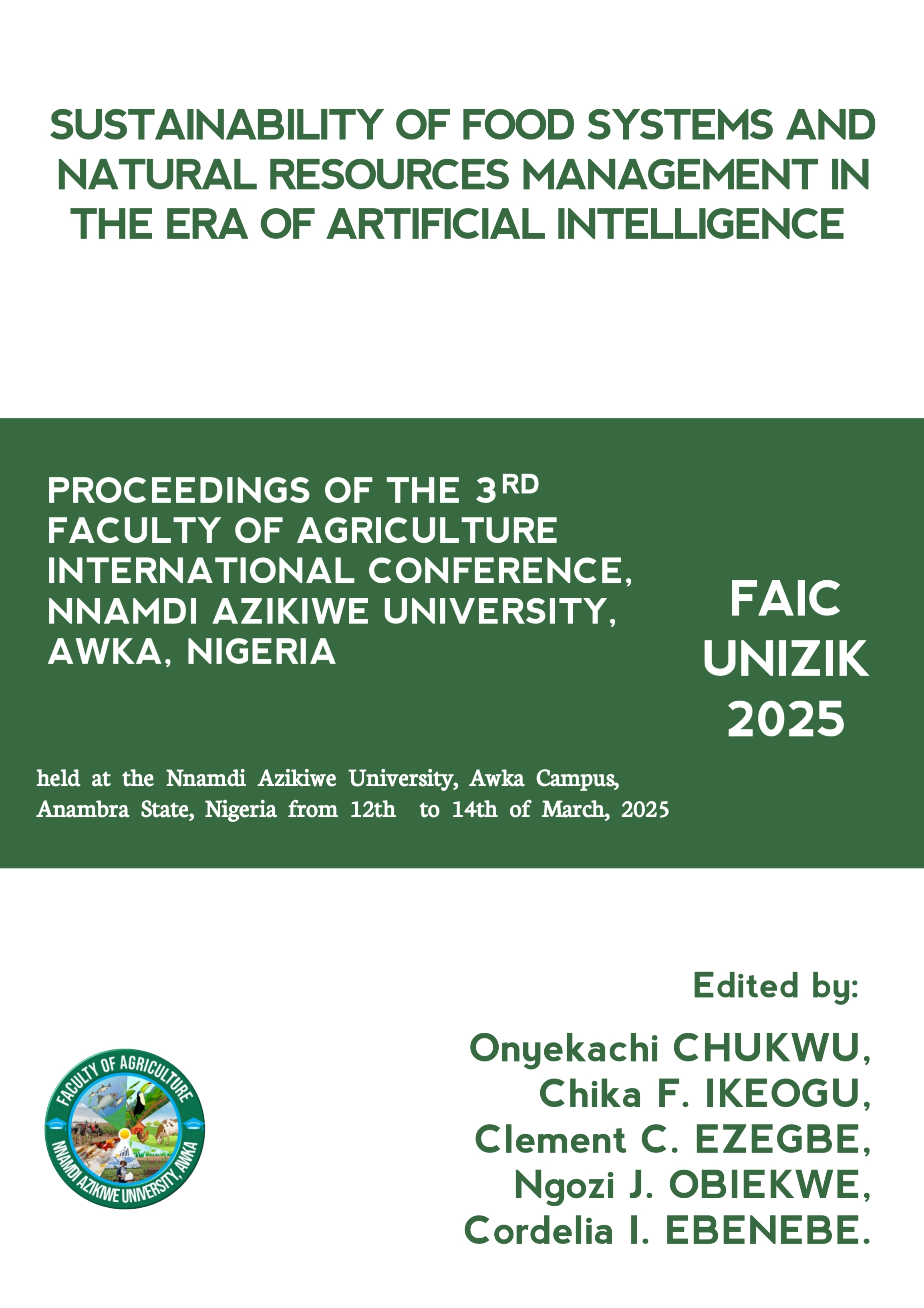Infuence of Land Use / Land Cover on Soil Properties at the Forestry Research Institute of Nigeria (FRIN), Oyo State, Nigeria
DOI:
https://doi.org/10.5281/gsh0zk54Abstract
Land cover transformation in and around the Forestry Research Institute of Nigeria (FRIN) can significantly alter soil physical and chemical properties, with potential impacts on soil fertility and ecosystem health. This study investigates how different land use types; undisturbed and harvested Gmelina arborea plantations (UGP and HGP) influence soil characteristics at FRIN in Jericho, Ibadan, Oyo State. Soil samples were taken at two depths (0-15 cm and 15-30 cm) and analysed at the IARandT, Moor Plantation soil laboratory for particle size distribution, pH, Organic Carbon (OC), Organic Matter (OM), Total Nitrogen (TN), exchangeable bases, cation exchange capacity (CEC), and micronutrient levels. The results showed differences between UGP and HGP land use types. UGP soils were slightly acidic pH (5.6), while HGP soils were slightly alkaline pH (6.5). At the 0-15 cm depth, UGP had higher OC (10.5), OM (17.68), and TN (1.054) compared to HGP OC (7.64), OM (12.97), TN (0.056). This pattern held at 15-30 cm, with UGP consistently exhibiting richer nutrient profiles. Exchangeable base levels and trace element concentrations in the UGP showed lower levels of Ca²⁺, Mg²⁺, K⁺, Na⁺, and trace elements like Fe3⁺, Zn²⁺, and Cu²⁺ than HGP, while maintaining higher CEC. The study concludes that differences exist in soil characteristics between UGP and HGP within FRIN. The findings show the importance of sustainable land management practices to support soil fertility and ecosystem health. The study recommends re-afforestation of harvested plantations to preserve soil quality and counteract the negative effects of land use changes.





